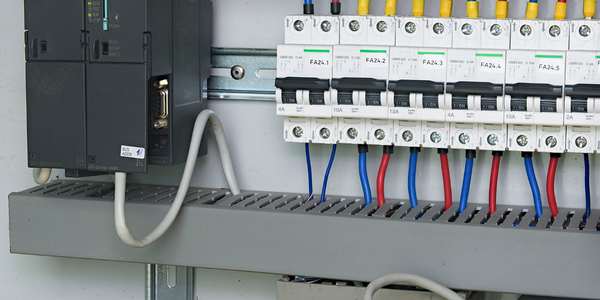公司规模
Large Corporate
地区
- America
国家
- United States
产品
- Samsung Galaxy S24
- Google Gemini Pro
- Imagen 2
- Gemini Ultra
- Gemini Nano
技术栈
- Vertex AI
- Android 14
实施规模
- Enterprise-wide Deployment
影响指标
- Customer Satisfaction
- Digital Expertise
- Innovation Output
技术
- 分析与建模 - Generative AI
- 平台即服务 (PaaS) - 应用开发平台
适用行业
- 电子产品
- Software
适用功能
- 产品研发
- 销售与市场营销
用例
- Generative AI
服务
- 云规划/设计/实施服务
- 软件设计与工程服务
关于客户
Samsung Electronics, a global leader in technology and innovation, is renowned for its cutting-edge consumer electronics, including smartphones, televisions, and home appliances. With a strong presence in over 200 countries, Samsung is committed to delivering high-quality products and services that enhance the lives of its customers. The company is at the forefront of technological advancements, consistently pushing the boundaries of innovation to create new possibilities for people everywhere. Samsung's collaboration with Google Cloud to integrate generative AI into its Galaxy S24 series exemplifies its dedication to providing state-of-the-art solutions that meet the evolving needs of consumers. By leveraging Google Cloud's expertise in AI, Samsung aims to offer enhanced user experiences, ensuring its products remain at the pinnacle of technological excellence.
挑战
Samsung Electronics and Google Cloud have embarked on a new multi-year partnership to integrate Google Cloud's generative AI technology into Samsung smartphones. The challenge lies in effectively deploying advanced AI models like Gemini Pro and Imagen 2 on Samsung's Galaxy S24 series, ensuring seamless functionality across various applications. Samsung aims to leverage these AI capabilities to enhance user experience by providing features such as text summarization, voice recognition, and image editing. The partnership also involves testing Gemini Ultra, Google's most advanced model, for complex tasks, and integrating Gemini Nano for efficient on-device operations. The situation demands a robust implementation strategy to ensure data security, privacy, and compliance while delivering innovative AI-driven features to users worldwide.
解决方案
The solution involves deploying Google Cloud's generative AI models, Gemini Pro and Imagen 2, on Samsung's Galaxy S24 series via Vertex AI. This integration allows Samsung to offer advanced features such as text summarization, voice recognition, and image editing across its native applications like Notes, Voice Recorder, and Keyboard. The partnership ensures that these AI capabilities are delivered with a focus on security, safety, privacy, and data compliance. Additionally, Samsung is testing Gemini Ultra for complex tasks and utilizing Gemini Nano for efficient on-device operations as part of the Android 14 operating system. This comprehensive approach enables Samsung to provide innovative AI-driven features that enhance user experience while maintaining high standards of data protection and compliance.
运营影响
数量效益

Case Study missing?
Start adding your own!
Register with your work email and create a new case study profile for your business.
相关案例.

Case Study
Remote Temperature Monitoring of Perishable Goods Saves Money
RMONI was facing temperature monitoring challenges in a cold chain business. A cold chain must be established and maintained to ensure goods have been properly refrigerated during every step of the process, making temperature monitoring a critical business function. Manual registration practice can be very costly, labor intensive and prone to mistakes.

Case Study
Predictive maintenance in Schneider Electric
Schneider Electric Le Vaudreuil factory in France is recognized by the World Economic Forum as one of the world’s top nine most advanced “lighthouse” sites, applying Fourth Industrial Revolution technologies at large scale. It was experiencing machine-health and unplanned downtime issues on a critical machine within their manufacturing process. They were looking for a solution that could easily leverage existing machine data feeds, be used by machine operators without requiring complex setup or extensive training, and with a fast return on investment.

Case Study
Cloud Solution for Energy Management Platform-Schneider Electric
Schneider Electric required a cloud solution for its energy management platform to manage high computational operations, which were essential for catering to client requirements. As the business involves storage and analysis of huge amounts of data, the company also needed a convenient and scalable storage solution to facilitate operations efficiently.

Case Study
Leveraging the IoT to Gain a Competitive Edge in International Competition
Many large manufacturers in and outside Japan are competing for larger market share in the same space, expecting a growing demand for projectors in the areas of entertainment, which requires glamor and strong visual performance as well as digital signage that can attract people’s attention. “It is becoming more and more difficult to differentiate ourselves with stand-alone hardware products,” says Kazuyuki Kitagawa, Director of Service & Support at Panasonic AVC Networks. “In order for Panasonic to grow market share and overall business, it is essential for us to develop solutions that deliver significant added value.” Panasonic believes projection failure and quality deterioration should never happen. This is what and has driven them to make their projectors IoT-enabled. More specifically, Panasonic has developed a system that collects data from projectors, visualizes detailed operational statuses, and predicts issues and address them before failure occurs. Their projectors are embedded with a variety of sensors that measure power supply, voltage, video input/ output signals, intake/exhaust air temperatures, cooling fan operations, and light bulb operating time. These sensors have been used to make the projector more intelligent, automatically suspending operation when the temperature rises excessively, and automatically switching light bulbs. Although this was a great first step, Panasonic projectors were still not equipped with any capability to send the data over a network.









